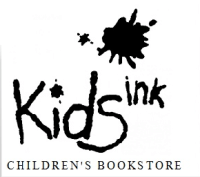As a classroom teacher of upper MG readers, I’ve been wondering lately on the constant technological pummeling we get from images—gaming, TV, movies, computers, tablets, phones. Screened devices have a powerful attention-grabbing effect on kids, and with so many stimulating colors, photos, Snapchat animations, and videos to look at, the modern-day imagination is contending with a very different ball of yarn than in decades past. It’s great that we can Google-Machine “Roman Empire ruins” and see hundreds of pictures, and it’s fun to test our eye-hand coordination by slashing air-borne fruit, chopping ropes, or helping a chicken across a road. But for many readers, after all that color and movement and music, the imagination may balk a bit when given black words on a white page.
For that reason, it might be pretty difficult for a middle grade teacher, parent, librarian, or writer to hook readers on books with descriptive passages, figurative language, or a generally more literary bent. But instead of avoiding imagery, it may be more important than ever to give readers an opportunity to envision and imagine through the words on the page. We should strive to provide work-out routines and fitness centers for the imagination in our stories through language and description. Inclusion of imagery in MG stories will complement the reader’s experience and ultimately improve and enhance the reader’s imagination. And imagination is important in any setting, as it drives flexible thinking and creative problem solving.
So, in order to spark readers’ imaginations, how do you recognize good imagery in MG works, and how do you write your own? Here are some qualities typically associated with imagery:
- Imagery is language that employs a mental use of the five senses.
- It can use certain figurative language devices like similes and metaphors, personification, and hyperbole, but it can exist without any other lit devices being present, too.
- Good imagery isn’t fluffy or fancy or filled with words you’d find on the SAT. Sometimes, in fact, incredibly simple syntax and short phrases make up excellent imagery.
- Imagery lets you see, touch, taste, hear, and smell the surroundings in the character’s world, and it draws the reader in with those experiences.
- Most importantly, good imagery leads the imagination off-leash—it guides, but never forces. The imagination has to be allowed to run free, if it’s to grow strong.
Here are some scenes in three works of MG fiction with imagery to consider:
 Madeleine L’Engle’s A Wrinkle in Time. The description of Camazotz is brilliantly creepy in its simplicity. L’Engle’s choice of short, clipped words and phrases reflect the vision concocted in the reader’s imagination of this austere town where anomalies are forbidden:
Madeleine L’Engle’s A Wrinkle in Time. The description of Camazotz is brilliantly creepy in its simplicity. L’Engle’s choice of short, clipped words and phrases reflect the vision concocted in the reader’s imagination of this austere town where anomalies are forbidden:
Below them the town was laid out in harsh angular patterns. The houses in the outskirts were all exactly alike, small square boxes painted gray. Each had a small, rectangular plot of land in front, with a straight line of dull-looking flowers edging the path to the door.
Things get more eerie with the rhythmical description of the kids outside all those houses, girls jumping rope and boys bouncing balls:
Down came the ropes. Down came the balls. Over and over again. Up. Down. All in rhythm. All identical. Like the houses. Like the paths. Like the flowers.
The imagery prompts our imaginations to not only see Camazotz but to hear and feel its driving beat, too.
 Sarah Jean Horwitz’s Carmer and Grit, Book One: The Wingsnatchers. Big, immediate conflicts or surprised exclamations from characters can work beautifully as openers in MG fiction and nonfiction. But atmospheric imagery can be used just as masterfully to hook the reader into the story. In this book, the two-and-a-half-page opener has no dialogue and no loud clatter of forces. But the tone of mystery, the discordant sounds, and the symbolic light/darkness imagery all work together to pull the reader in:
Sarah Jean Horwitz’s Carmer and Grit, Book One: The Wingsnatchers. Big, immediate conflicts or surprised exclamations from characters can work beautifully as openers in MG fiction and nonfiction. But atmospheric imagery can be used just as masterfully to hook the reader into the story. In this book, the two-and-a-half-page opener has no dialogue and no loud clatter of forces. But the tone of mystery, the discordant sounds, and the symbolic light/darkness imagery all work together to pull the reader in:
At the South Gate, just outside the winding iron bars, the Autocat waits. Its jeweled eyes gleam in the darkness. It watches as each golden lantern on the pathway blinks out, one by one, and it growls–a rough, scraping sound like metal on metal, a sound never heard in the garden before. The creature slinks off into Skemantis’s black night, its mission accomplished.
 Karen Hesse’s Letters from Rivka. Good imagery keeps firmly in the voice of the 1st person character, in this case, a young Russian refugee fleeing to America in 1919 and seeing Poland for the first time:
Karen Hesse’s Letters from Rivka. Good imagery keeps firmly in the voice of the 1st person character, in this case, a young Russian refugee fleeing to America in 1919 and seeing Poland for the first time:
The same crooked cottages, the same patchy roads, the same bony fences leaning in to the dust. Looking out from the train, we see people dressed like us, in browns and blacks; people wrapped in layers of clothes.
Thanks for reading! Please feel free to share thoughts you have on imagery in MG writing, or name some writers you enjoy who do a great job at sparking readers’ imaginations.













